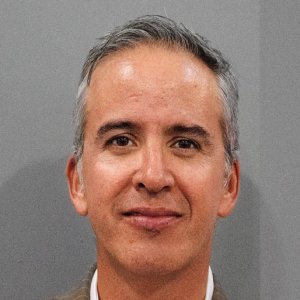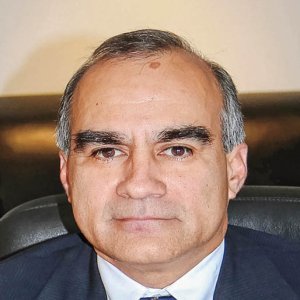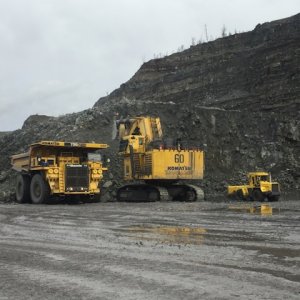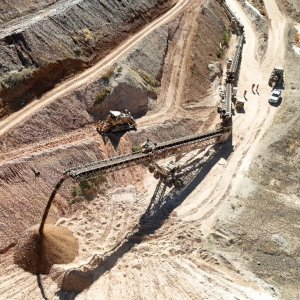Communication Key to Successful Mining Projects

Communication Key to Successful Mining Projects

STORY INLINE POST
Q: How would you describe the main challenges the mining industry in Mexico faces?
JT: The global mining industry sees Mexico as a favorable country for operations but taxes and security challenges definitely have a negative impact nowadays. Our clients consider these two factors to be the main obstacles for the industry. Companies also worry about environmental and labor issues. The mining royalty scheme is a burden that affects the number of projects that enter the country. Peru and Chile provide strong competition when it comes to mining. Consequently, they are attracting operators that are not pleased with the royalty taxes in Mexico. The taxes have had a negative impact on the overall position of the country on a global scale. The special royalty taxes have forged a complicated scenario for mining companies and the metal prices have created a dent in operations. But operators must understand that it is now part of the cost of doing business in Mexico.
Mine sites have the ability to become an important source of resources for surrounding communities but the isolation of these areas often creates risks such as insecurity. We have clients that struggle with the transportation of the final product. Some companies are forced to even fly the product out of mine sites due to security risks, an expensive transportation method.
Mining reserved areas are also potential obstacles. When the government labels an area as a reserve, it has the authority to approve the purpose it will hold, even if it has a mineral deposit. Therefore, companies must be careful and make sure that the area they wish to develop is free for mining before applying for a concession. Geological and seismic analysis are more complicated than simply looking at a map. They are in fact extremely necessary. Communication with geologists, prospectors and engineers is required to develop a map before choosing an area to apply for a concession to make sure it is not a reserved area or owned by someone else. This is one of the most difficult parts of the process, but following the correct steps makes it easier for mining companies to be successful in securing concessions.
Q: How has the Energy Reform changed the mining industry in Mexico?
JT: Mining lends itself to cooperation with the energy sector. The players in the sector know how to interact with communities and map out the geological potential of areas. Companies used to have issues with the cold methane bed gas that was naturally developed as part of the mining process as the law did not allow operators to use it. The resource was being completely wasted but the Energy Reform allows for more flexibility. This is actually an activity that is complementary to operations. Obviously, if gas or energy become the central focus of operations, then the company would no longer work in the mining sector, it would enter a different industry.
Carbon in particular creates a type of methane gas that can naturally be a form of revenue for mining companies. Many mines also have hydrocarbon deposits in areas where plants are being built. When hydrocarbon prices become more favorable, we might see more collaboration between mining and oil and gas companies.
Q: How effective do you think mining regulation is in Mexico?
BR: From an environmental point of view, SEMARNAT has several guidelines for all projects that could potentially impact the environment. The agency is making a strong effort to offer additional information and support because global companies consider the quality of the governmental processes within the country highly important. The first stage of projects is usually the least regulated but more advanced phases, like exploration and exportation, are more stringent. If a company does not start following norms in the beginning, it can experience considerable problems later on in the process. As long as companies have more effective procedures with governmental issues, they can ensure more effective projects.
Q: What are the largest areas of opportunity within social and environmental compliance?
JT: In the past, outdated or obsolete methods were commonly used. Operators thought that working in isolated communities gave them the freedom to do as they please without suffering any consequences. This mentality left a legacy in the mining industry that is still present today. Despite the beliefs of many companies, it is not enough to secure governmental authorizations. Problems are more likely to arise in the future without the approval of communities or indigenous groups. San Pedro in San Luis Potosi was one example of this trend, as it generated years of conflict and chaos. All sectors should be prioritizing community consultation, in particular hydrocarbons. Communities need to see clear signs of concern and cooperation.
Q: How has the industry’s attitude toward environmental impact changed?
JT: The accident in Rio Sonora in 2014 helped raise environmental awareness in mine sites. It pushed companies to start prioritizing environmental compliance. Now, the entire life cycle of mine sites is being evaluated for environmental compliance, not just the initial phase. Mining operators are starting to see environmental compliance as a duty when they actually used to commonly leave mine sites open and in ecological devastation.
BR: The percentage of noncompliance was massive and the challenge was brought to light by PROFEPA, our federal environment prosecutor. The institution completed more or less 1,000 inspections within mining companies throughout 2015. The results were released in January 2016 and only 35 percent of the visits revealed mine sites that were compliant with norms. We were not surprised by this outcome considering the situation in Sonora. Mining companies need to take the concept of corporate social responsibility to a whole new level.
For the oil and gas industry, the National Human Rights Commission released recommendations for environmental compliance in August 2016 that now include community consultations and are based on international norms. However, these same specifications were not established for other industries, so many mining companies struggle with the lack of clearly established regulations in terms of community consultation. Environmental issues are complex as they need to include a human rights perspective and international recommendations. These norms push projects to respect the rights of people in surrounding communities and indigenous groups.
Q: What is the most efficient method to include social and environmental projects within a business strategy?
BR: Operators can incorporate more preventive and proactive approaches by identifying, within economically viable projects, a map of advantages, areas of opportunities and allies. Taking the time to develop a strategy often helps align the objectives of a project with the needs of surrounding communities and ensures success. But, as many of these projects are performed far from cities, it is difficult to have an effective form of communication.
JT: We find it effective for operators to use a combination of outside and internal consultants to manage environmental and social issues. Independent and external advisory services are recommended as the initial work requires a detailed amount of heavy analysis. A large team is needed to map out the complex necessities of the project and the community to create a strong foundation. The idea is to highlight the risks of the project and create strategies that can resolve them.
But operators need to remember that community development projects should always be created through dialogues. For instance, we heard of an operator that was building a soccer field in a community as an attempt to create rapport. But the company quickly realized that the project was greatly opposed as it was in an area that mostly plays basketball. It proves that each community is different and companies cannot just assume the needs of the area.
JT: It may not be easy but many projects prove that proactive approaches can create a greater end result both from an economic perspective as well as a social and environmental status. Companies should rightfully benefit from implementing well established business decisions that also create positive effects on social and environmental factors. These types of actions are commonly supported by shareholders.
A common problem in mining operations is that locals are not involved in overseeing the projects. Having a team that cannot even speak the language or understand the culture of the area is obviously bound to cause issues. Locals should always be considered and included in mining projects.























